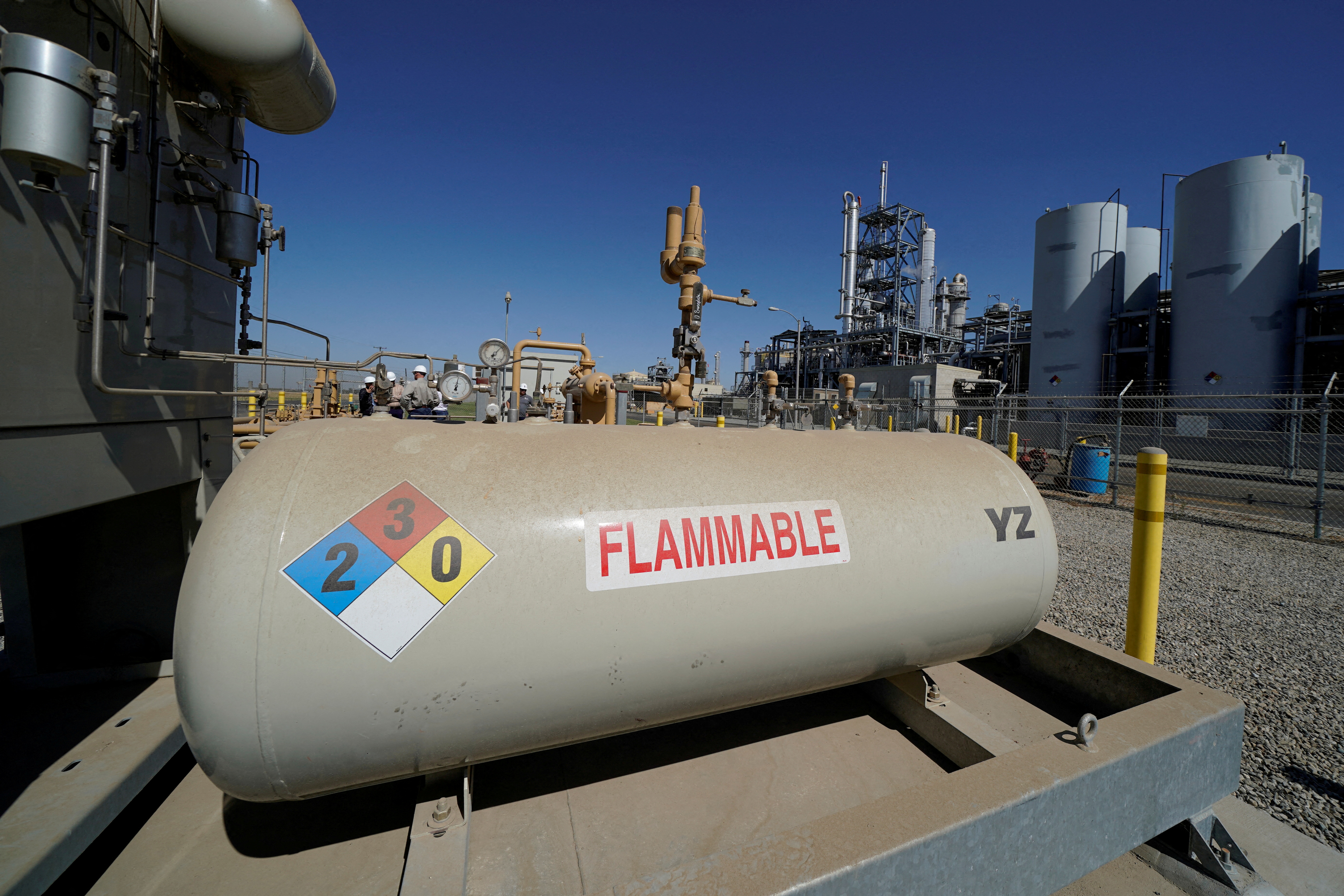Jan 28 (Reuters) - U.S. natural gas futures soared over 70% during the last half hour of trade on Thursday and closed up 46% in their highest daily percentage gains on record. The move puzzled a number of market-watchers, who struggled to explain what could have caused such a spike.
The answer lies in the low-volume action because Thursday was the last day of that contract's life - when very few buyers would be willing to take a position as most had already moved on to other contracts. These occurrences are becoming more common, though usually not on the order of what happened Thursday.
"Gas contracts rolling off the board have gained an average 12.1 cents in 12 of the past 14 months on their final trading day," analysts at EBW Analytics Group said.
Thursday's move was even more outsized. Prices rose from $4.84 per million British thermal units (mmBtu) at 2 p.m. EST (1900 GMT) to a high of $7.35 at 2:14 p.m. before settling at $6.27, the highest close for the front-month since October 2021.
Eli Rubin, senior energy analyst at EBW said Thursday's "price action appears suggestive of a large player getting caught short and losing big." He did not hear of any specific firms caught short.
Analysts at Gelber and Associates said there is talk in the market that a "large producer's inability to make delivery at Henry Hub forced them to cover short positions and put them on the wrong side of one of the most dramatic price escalations in the marketâs history."
ILLIQUIDITY
On the New York Mercantile Exchange (NYMEX), all natural gas contracts not closed at expiration go to delivery at the Henry Hub natural gas storage facility in Louisiana. As of Thursday, there were just 620 February contracts outstanding - compared with more than 276,000 outstanding March contracts at present.
However, total volume traded in February futures on Thursday was just 7,182 contracts, versus 193,252 March contracts, according to NYMEX. About 2,874 contracts were traded during the last 30 minutes before expiration at 2:30 p.m. EST (1930 GMT), according to data provider Refinitiv.
That is a miniscule amount of trading, and the volatility it caused prompted NYMEX to halt trading briefly 12 times through circuit breakers meant to keep markets orderly.
CAUGHT SHORT
"Short sellers may have gotten squeezed out ahead of February expiration," said Edward Moya, senior market analyst at OANDA. "Many hedge funds were betting gas would go up as frigid weather sent demand soaring, but money managers were short."
Short sellers generally borrow contracts from brokers and sell that gas when prices are high. They hope to profit by a decline in prices in the future. However, if prices rise, it forces short sellers to pay more for the gas then they received.
When the contract is about to expire, short sellers can get squeezed into buying gas at any available price to cover their obligations in a very thin market with little gas available - making it risky to remain short on expiration day.
CHANGE IN DEMAND FORECASTS
Fundamentals played a small part in the action as well, analysts said.
On midday Thursday, new weather forecasts projected even colder temperatures than previously expected for the next two weeks - pushing utilities to take more gas from storage, and threatening tighter supply.
"Upward price pressure during the close on contract expiry days has become increasingly common, though it usually only moves prices by a few cents," analysts at Goldman Sachs said, noting "This can become a more frequent concern for producers with hedging exposure, especially if the hedges are priced using the expiry settle."
Our Standards: The Thomson Reuters Trust Principles.


